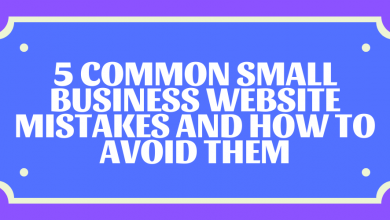Do You Send an Invoice After or Before Payment? Best Practices for Invoicing Explained

Invoicing is one of the most crucial business operations for any company. It does not only maintain your cash flow but also is responsible for revenue generation. In short, it is invoicing that helps you get timely payments for running your business successfully. However, when to send an invoice to your customers can be a touchy subject for field service management.
The most crucial task a service business owner faces is sending invoices for their services or work done. The question is when to send an invoice to clients? Can you send an invoice before the work is done, or do you need to send an invoice before or after payment? Or invoice before service?
Invoicing a customer before a job might seem like an easy answer to the problem – you get paid quickly upfront and your payroll schedule stays on track. Having said that, the best time to send an invoice depends on the type of service you offer, your business needs, and your relationship with the customer.
When it comes to field service, the task becomes even more complex. But what if the scope of the work changes after you’ve started, and you need to make a price adjustment? That’s a new challenge. On the other hand, what if you’re rushing from one job to another? Then, invoicing right after the job isn’t always convenient. But if you wait, you risk forgetting or disrupting your cash flow.
Considering the risks, the question of when to send the invoice in the service delivery business has always remained a disputable issue. And most business owners, especially small field service companies, struggle to figure out the right time. But like every other market practice, invoicing in field service business also follows some standard business principles. And in this blog, we are here to explain it all. Go through the discussion and manage your billing and invoicing processes efficiently so that your cash flow is never disrupted, and you are always on track with your goal to make more profit.
1. What is an Invoice?

Before we proceed to explain the best invoicing practices, let us take a quick look at the true meaning and importance of invoices.
An invoice is an itemized list of products sold or services provided, along with the amount of money owed for each line item, and the total amount of money owed. An invoice is sent from the biller to the client, in hopes of being paid within a certain amount of time.
Following this definition, it is evident that an invoice is different from a bill or a receipt. A receipt is different from an invoice in that an invoice is requesting payment for products or services received, whereas a receipt is a proof that the services or products have already been paid for. An invoice comes before the payment has been made, while a receipt comes after the payment has been made. In other words, you would send an invoice after a service has been completed and money is owed, and then you would send a receipt after you receive the payment from the invoice. On the other hand, if you are a customer, the invoice you receive is your bill, and then you will receive a receipt once you pay your bill. So, the process can be formulated in the following way:
2. Why is Invoicing Important for Field Service Management?

An invoice is important for the client or customer receiving it because it notifies them that a payment is due and what the amount is. Besides, it is of utmost importance for the business since it prompts the payment process. In addition, invoices are also a valuable financial tool for tax purposes as they can show the government that a business has correctly reported its income.
3. When Should a Service Delivery Business Issue an Invoice?
Going by the definition, it is only reasonable that an invoice should be issued when the service provider has completed a customer’s order for a particular product or service. However, when it concerns providing a product, the invoice is usually generated shortly after its delivery. But in a service delivery business, the invoice is generated after that service has been provided.
Most consumers today expect to pay after a job is complete, just like they pay after they have ordered a meal from a restaurant or purchased goods from a store. The best practices for invoicing in a service-oriented business, therefore, must come after a follow-up with the customer. First, enquire whether they are satisfied with the service, and then generate the invoice to request payment.
Let us try to understand the situation with an example:
Suppose you own an electrical company known as ABC lighting. A customer, Mr. C, contacts you for installing a new lighting system at his home. Once you confirm the work order and schedule an appointment with Mr. C, your technicians arrive at his place and get the job done. Afterward, they check in with Mr. C. He is reportedly thrilled with the unique design and the professionalism of the technicians. Recording his feedback, the technicians return to the office and inform their supervisor, who then forwards the information to the accounts department. Following the heads-up, they create and sends an invoice to Mr. C so that ABC Lighting can get paid
But let’s consider that the technicians did not follow up with Mr. C, who is actually not satisfied with the work. So, when he receives the invoice, he raises complaints. Or worse, he disagrees with some of the items mentioned in the invoice. Valuable time has already been wasted in the process and the chances of getting paid immediately seem rather bleak. At this stage, the management has to get involved in the matter. The invoice must be modified and recreated to address Mr. C’s concerns. Maybe a discount has to be offered as well. This means more delay in payment for ABC lighting.
The only way to avoid these untoward events is a follow up with the client right after the job is done, and proceed with the invoice taking his feedback into account.
4. When Can You Send Invoices Before the Job is Done?

Sometimes, it would make more sense to send an invoice before starting a job for your customers. This is commonly called a prepayment or deposit. This method is often followed by small companies or the ones who have just started doing business. In general, there are some scenarios where deposits or prepayments are more effective. Such as:
To avoid the risks, you may ask your customer to pay upfront before you start the job. However, prepayment or deposition has its own risks. The major issue here is not being able to deliver the service as promised. Furthermore, there is the risk where the customer is not satisfied with the job or disapproves of the service and materials provided at the end, which takes you back to the issue of customer feedback mentioned earlier.
5. How Long It Takes to Get Paid After Sending an Invoice?
Payment terms are determined by the seller of the product or service. Usually, they are net 30 days, 60 days, 90 days upon receipt of service, or due upon receipt. Payment upon receipt, however, is an area of concern for most businesses as clients will often have their own terms of paying for goods and services. And if they do not align with your company’s interests, it could be a major setback for your cash flow. This is why it is always advisable to communicate with the customer upfront and settle a payment window. Regardless of what you agree upon, the payment terms and the due date should be clearly stated on the invoice.
That being said, if after several months after a job has ended or a product delivered you realize that you forgot to issue the invoice, it is courteous to speak with your customer and let them know what happened so you can come up with a solution together.
If the customer happens to argue this and claims that they will not pay since no invoice was issued, you may want to prove that the products were delivered or service was provided. This is why it is important to reiterate that you must always provide an invoice each time you make a transaction.
6. What Happens If You Send an Invoice After the Payment?

Sending an invoice after you get paid means you are backdating the invoice, which is not ethical or even legal. At the worst, you will end up exposing your business to liability issues and audits. Regardless of the kind of business you are doing, keeping good and clean records is vital for success. Therefore, as a rule of thumb, you cannot and must not send an invoice after payment. Although there are some legitimate instances that would necessitate you backdating an invoice, such as if you forgot to issue one in the first place, it is never a good idea.
7. What is the Most Efficient Way to Send an Invoice and Get Paid on Time?
When you create an invoice, there are too many things you must consider to make it correct and acceptable. While including the company name, address, description of the service provided, items used in the job, total billable hours, date of service, date of invoice, etc. are common sense, there are certain things that must be mentioned in the invoice. For example, invoice number, tax-related details, payment terms, and so on. Besides, you need to fill in the customer details accurately as well.
Now, if you are using the traditional paper-based method, there are fat chances for errors to take place. Even if you are meticulous with the task, imagine how carefully you need to write every detail, and how many times you have to enter the data manually to keep all the records straight.
This, however, has been a tale of a long-gone era. With the advent of modern technology, creating and sending invoices has become easier than ever, thanks to cutting-edge digital tools. There are now plenty of accounting software and work order management software that automates the job for you. With these software solutions, you only have to enter the data once and get a detailed invoice automatically. All that is left to do is send the invoice to your customer and get paid.
Before We Wrap Up
Field Promax brings you the best solution for all your billing and invoicing issues. The smart, cloud-based field service management software integrates with QuickBooks, the leading accounting software available on the market today. The two-way synchronization allows you to use the same data to perform a wide array of tasks, from creating estimates and generating work orders to making invoices, thus eliminating the need for redundant data entry or errors. Once your technicians complete the job, they can update the status and create the invoice in the field itself. You can then verify, add items, modify, and share the invoice directly with the customer to hasten your payment process.
Besides, the efficient field service software supports sharing digital proof of work, meaning your technicians can share images of the job from the field, so you have no conflict with the customer after the service is delivered. The software also supports digital signature so that your invoice is approved immediately by the customers and you can get paid instantly.In simple words, Field Promax supporting QuickBooks Online and Desktop Integration make invoicing, as well as your life easy. So, reach out to us for more information and keep your cash flow running.





